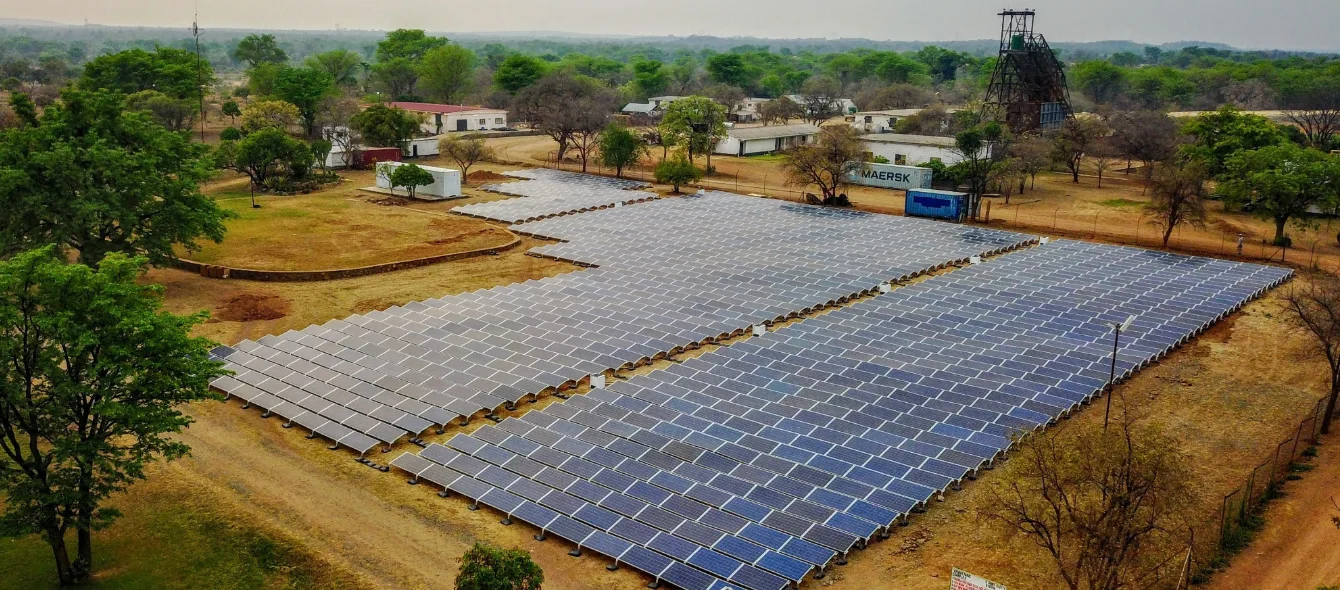
In many countries, the energy sector still needs to be expanded. But it is here that there is a lot of potential for renewables: through the leapfrog phenomenon, some developing countries could largely skip the fossil energy supply phase and go straight to renewables.
© Sebastian Noethlichs, shutterstock
Consumption of fossil fuel for electricity production may well have passed its prime, as shown by the latest report by the Carbon Tracker Initiative and the Council for Energy, the Environment and Water (CEEW). The report further states that the share of renewable energy is growing, displacing coal and oil in large parts of the world. According to the authors, this development will accelerate considerably in the next few years, driven by the phenomenal growth of electricity markets in emerging countries.
Researchers see signs of an impending leapfrog event in many of these nations. This phenomenon entails a system – the electricity sector in this case – skipping one or several stages of development. The Reach for the sun. The emerging market electricity leapfrog study explored the consequences this could have for the global energy transition.It is primarily based on data and forecasts by the International Energy Agency (IEA) and the Organisation for Economic Co-operation and Development (OECD).
In most industrial nations, fossil energy sources are gradually losing significance. Demand in the electricity generation business peaked in 2007 and has since dropped by some 20 percent. Countries mostly in North America and Europe are in the midst of a transformative process. As power needs in the 38 OECD member states, most of which have strong economies and have come far along the development path, have been fairly flat for years, the task at hand there is to replace fossil fuel with renewable energy above all else.
Demand for electricity will rise significantly
The situation in less developed countries, e.g. in large parts of Asia, Latin America and Africa, is different. Their energy sectors have less scale and millions of inhabitants lack all access to electricity. Per-capita demand for electricity is less than one third the level prevalent in industrialised nations. However, the study’s authors forecast substantial growth in non-OECD countries in the coming years. Based on their calculations, the per-capita need for power will increase from an annual 2.5 megawatt hours (MWh) at present to 5.9 MWh by 2050. This would match average demand in European nations. Meeting higher demand will require a substantial build-out of generation capacity.
This clearly puts renewables at an advantage, as demonstrated by the experts. Renewables already represent the lowest-cost alternative for new generation assets almost all around the globe, and emerging countries in particular possess enormous potential in terms of solar and wind energy, which according to the report is 140 times larger than their need for energy. The share of electricity supply accounted for by solar and wind in these countries (excluding China) is still a mere four percent. This means that expansion potential has virtually been left completely untapped.
The study’s authors believe that this basic setting provides the opportunity to make a leapfrog jump. Energy systems in most industrialised nations have gone through many development stages, from limited access via secure and comprehensive supply from purely fossil fuels to the transition to green power. Systems in emerging countries could largely leapfrog oil, coal and gas-fuelled electricity generation. Regions that are not yet connected to the grid at all could be supplied directly with wind or solar energy in a few years. Such a quantum leap was witnessed in the telecommunications sector as well: The first piece of telecoms tech owned by many in Africa was a cellphone instead of a wireline connection.
Change must be promoted
This would affect the global system transformation. The researchers believe that emerging countries could be responsible for 88 percent of growth in demand for electricity between 2019 and 2040. The Paris climate targets could be jeopardised if they do not place their chips on renewable energy right away. This projection is endorsed by the study: The scientists are of the opinion that 84 percent of the aforementioned demand increase must be contributed by renewables in order to reduce worldwide greenhouse gas emissions to zero by 2050 and limit global warming to 1.5 degrees Celsius.
The authors are optimistic about many emerging countries making a leapfrog move as long as framework conditions allow for this. This includes open and transparent markets as well as the introduction of market-driven invitations to tender and auctions to expand capacity. These are key prerequisites for attracting investors and the capital urgently needed for the build-out.
Some countries have already shown what this could look like, with India leading the way: This southeast Asian nation has connected almost all homes to the grid and introduced renewables on a large scale while establishing clear expansion goals, thus taking a double jump forward. And renewables continue their rise in the other emerging countries (excluding China). Based on the report, 87 percent of their new generation capacity was regenerative in 2019.